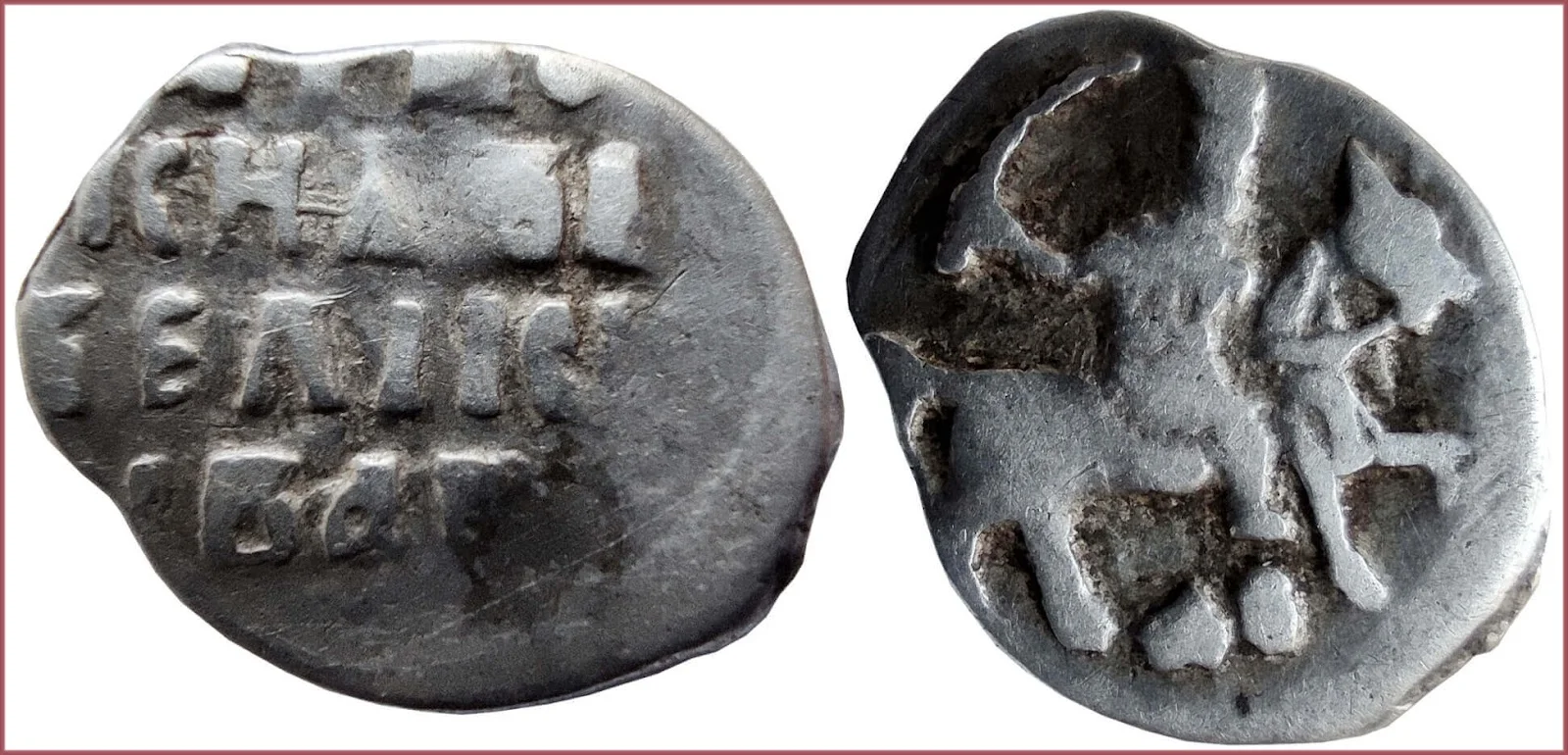DENGA: COIN OF RUSSIA
Denga (Денга), after 1547: Tsardom of Russia (Tsardom of Muscovy)
Russian wire money (Russian "Проволочная монета", "чешуйка", "чешуя").
Ruler: Ivan IV Vasilyevich (Ivan the Terrible or Ivan Grozny) — the grand prince of Moscow and the first Moscow ruler who declared himself tsar of all Russia.
ЦРЬ IКНАSЬ ВЕЛIКI IВАН: Tsar and Grand Duke Ivan.
Horseman (Russian "Ездец") with a sabre (Russian "Сабля") on galloping horse.
Sign "ДЕ" under horseman: Moscow mint, Russia.
- Silver (0.960): 10 mm - 0.33 g
- Reference price: 7.5$
COIN DENGA — WHERE & WHEN (coins catalog: by names & emitents)
- GRAND DUCHY OF MOSCOW + TSARDOM OF RUSSIA + RUSSIAN EMPIRE, 14th-18th centuries: denga = 1/2 kopeck
The name of the coin denga, without a doubt, has Asian roots. But there are several versions of the origin of the word. Most likely, the term comes from the Turkic "tenge, tenga..." ("silver coin" or "money").
There is also an unpopular assumption that the prototype denga is the Indian tanka or tanga coin (rather doubtful — this coin probably appeared later).
In my opinion, the emergence of the term denga was most influenced by dang — a silver coin of the Golden Horde (Russian lands at that time were largely under the yoke of the Golden Horde).
The appearance of the Russian coin denga ("денга") is attributed to the 14th century. From ancient times it was a coin worth ½ kopecks. This is the denomination used in the beginning. However, over time, the name evolved and between 1796 and 1828, this type of coin was called den'ga ("деньга" — with a soft sign).
Formally, denga (денга) and den'ga (деньга) are two different coin names.
By the way, the Russian word "money" ("деньги") comes from the name of the den'ga ("деньга") coin.

